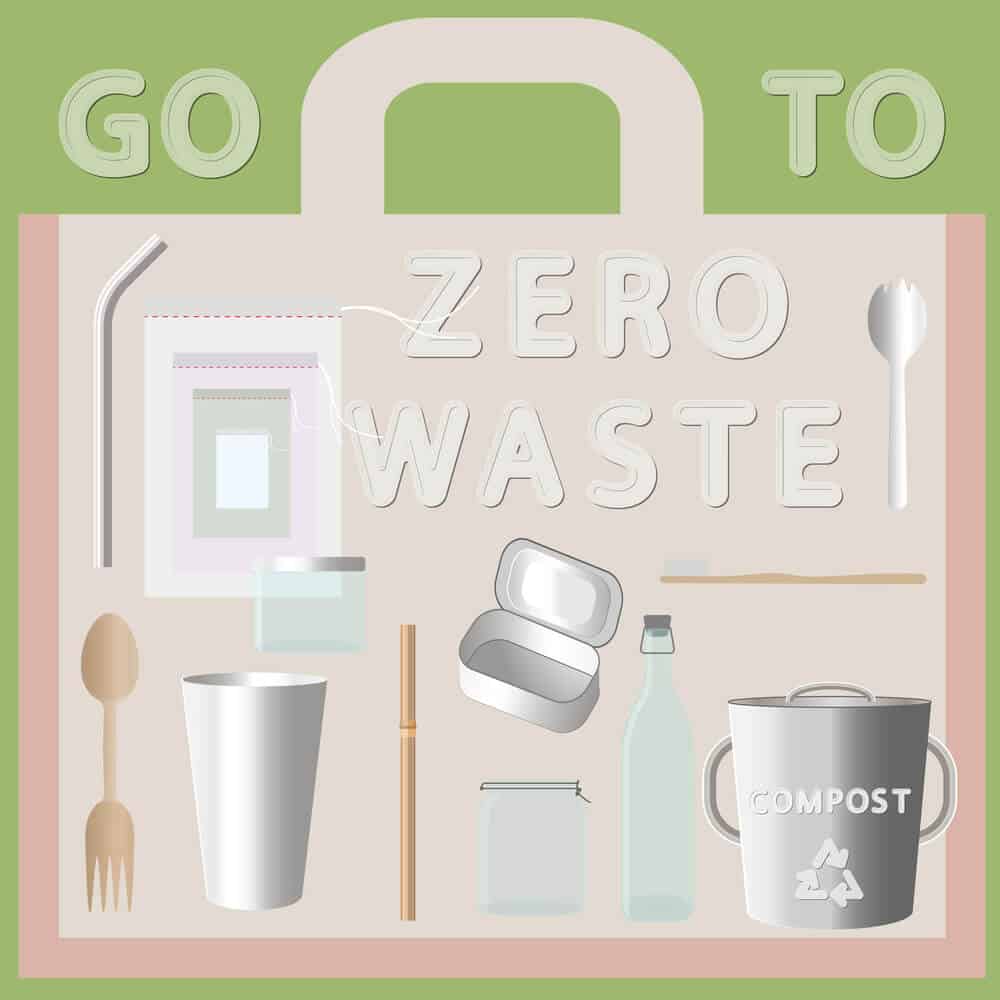Zero waste means having a goal of eliminating as much trash from your household as possible.
For most that are living a zero-waste life, it means that you are attempting to have a simple, richer life that is based on experience instead of objects.
If you have heard the term “zero waste” and thought about attempting to reduce your carbon footprint, it’s important to know that for zero waste to be practiced, it doesn’t mean that it only involves getting rid of plastics, it involves having a more minimalist, thoughtful approach to living.
If you are ready to embark on this lifestyle, here are some ways to help you get started.
Know Your Why’s
It can be overwhelming when you learn about the amount of daily waste that you and your household produce.
So, not only is it important to understand how we produce waste, but why it’s important to us to reduce or eliminate waste.
Some things to ask yourself that can help you understand why it is important to you to start living a zero-waste lifestyle may include:
- Are you fed up with seeing trash along the streets?
- Are you overwhelmed with plastic grocery bags?
- Are you trying to avoid the harmful toxins that are found in plastics?
- Are you concerned about the future of the environment?
- Is spending $5 or more on a cup of coffee each morning getting to be too much?
- Do you read the ingredients in personal care items in order to avoid products that contain toxins?
- Do you feel guilty when you use and then throw away plastic utensils and Styrofoam containers?
If you answered yes to any of the above questions, you may be ready for the journey of a zero-waste lifestyle.
It is important to keep in mind, that regardless of how ready you are, it is a slow process, so don’t get upset with yourself if all the changes you expect don’t happen immediately.
Concentrate On How To Reduce Your Trash
One of the easiest ways to understand where you are wasting is by looking at your trash.
Pay careful attention to what is going in the trash and how much trash you are putting out for pickup each week.
If you are noticing a lot of to-go coffee cups, take-out containers, and bags, personal care items that aren’t completely empty, enough food for another meal, or clothing that may be out of style but still in great condition, you will have a general idea of where to begin planning for zero waste living.
Prioritize your waste by eliminating it.
For instance, if you realized that there are a lot of take-out containers or leftover food, prioritize meal prepping, packing lunches, and eating homemade leftovers.
Ditch the Styrofoam and To-Go Eco-Friendly Containers
Styrofoam may be potentially toxic, so one of the first steps to take when attempting a zero-waste lifestyle is to ditch the Styrofoam.
If you aren’t quite ready to give up the convenience of disposable, consider using compostable paper plates, bowls, cups, and napkins.
If you get the occasional to-go meal, request the largest container and ask that all the foods be placed in the same container.
For instance, instead of receiving a Styrofoam container for your burger and the paper container for the fries, ask the restaurant to put both in one container.
Many coffee houses encourage no-waste, so they are happy about refilling your personal coffee container, so avoid excessive to-go coffee cups by taking your own reusable coffee cup to the coffee house for a fill-up.
Start a Compost Pile at Home
Composting is a way to turn organic waste into organic fertilizer.
Not only does composting reduce the amount of trash you put in the landfill, but it will also help you have great fertilizer for your garden, and it’s great for the environment.
There are a lot of things that you may not have known could be composted, including:
- Coffee grounds and tea bags
- Eggshells
- The trimmings from fruits and vegetables
- Unbleached paper
- Yard trimmings
The best thing is you don’t need a large yard to start composting; you only need about 3 feet of backyard space and a closed container.
If you don’t have the outdoor space or simply want an alternative to compost at home, you may be able to participate in municipal composting.
Simply do a little research to find out if there is a municipal composting site in your area.
Make and Use a Multipurpose Zero Waste Cleaner
You may have to invest in a plastic bottle, but it will be a one-time investment that can be used for years, so you’ll be reducing the number of plastic bottles of cleaner that you may be tossing in the trash on a regular basis.
To make your own homemade, environmentally friendly cleaner you’ll need:
- 1 cup of water
- ½ cup of distilled white vinegar
- About 10-20 drops of essential oil (lemon, eucalyptus, or lavender)
- Shake the ingredients before each use
To clean stubborn stains or for more serious cleaning, such as the oven, sprinkle baking soda over the stain or in the oven, spray with the vinegar solution and let sit for a few minutes before rinsing.
Replace as Needed
We don’t need to buy all of our zero-waste alternatives right away.
To prevent feeling overwhelmed and stressed about what you need, only buy reusable items as the items that aren’t zero waste items run out.
Not only will this save you money, but it is also logical-buying items and throwing unused items out is wasteful.
For instance, if you have recently purchased a new bottle of all-purpose cleaner, although you noticed that some of the ingredients may be toxic, you’ve probably been using the same cleaner for some time now, so go ahead and use it up, then clean the bottle and reuse it for your homemade cleaner.

Shop Secondhand Whenever Possible
First, it’s important to only buy what you need, but if you do need items, look for them at local thrift shops.
The items in thrift shops, consignment shops, and second-hand stores have already been made, so there isn’t a need for new resources to be used on creating them and the prices are typically less expensive than buying new ones.
When shopping, regardless of how great a sale is ask yourself if you really need the item, this will help you to avoid over-consumption and waste.
When you do purchase new items, such as clothing, consider donating something out of your closet for each item you purchase.
You’ll be giving someone else the opportunity to enjoy the item, while you reduce the waste in your home.
Conclusion
In order for Zero Waste to Be Practised, it’s important to remember that it will not happen instantly.
When it comes to lifestyle changes, making small, but essential steps is the key.
In order to have a fully zero-waste lifestyle, it may take several months or even a year or two, but if you stay focused on the amount of waste in your household and are dedicated to the change, you can do it.
It is important to get inspiration and support from others, but to be successful in this journey; you cannot compare yourself to others living a zero-waste lifestyle.


